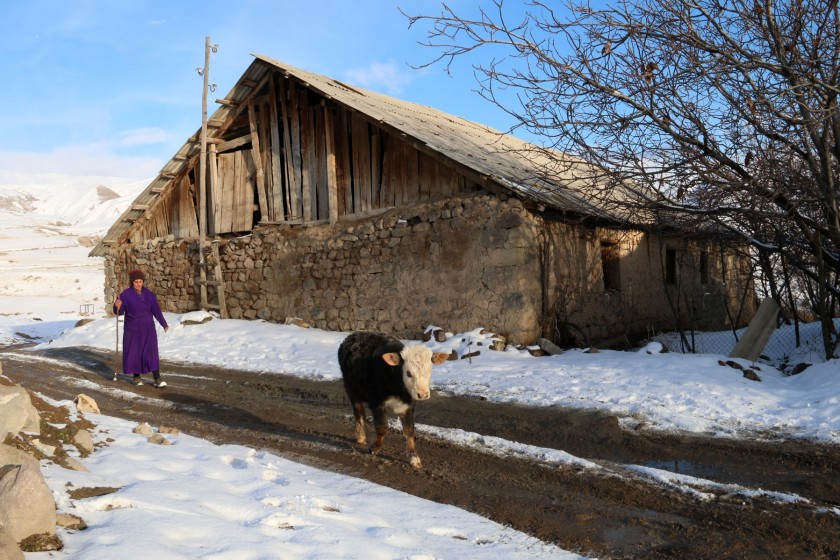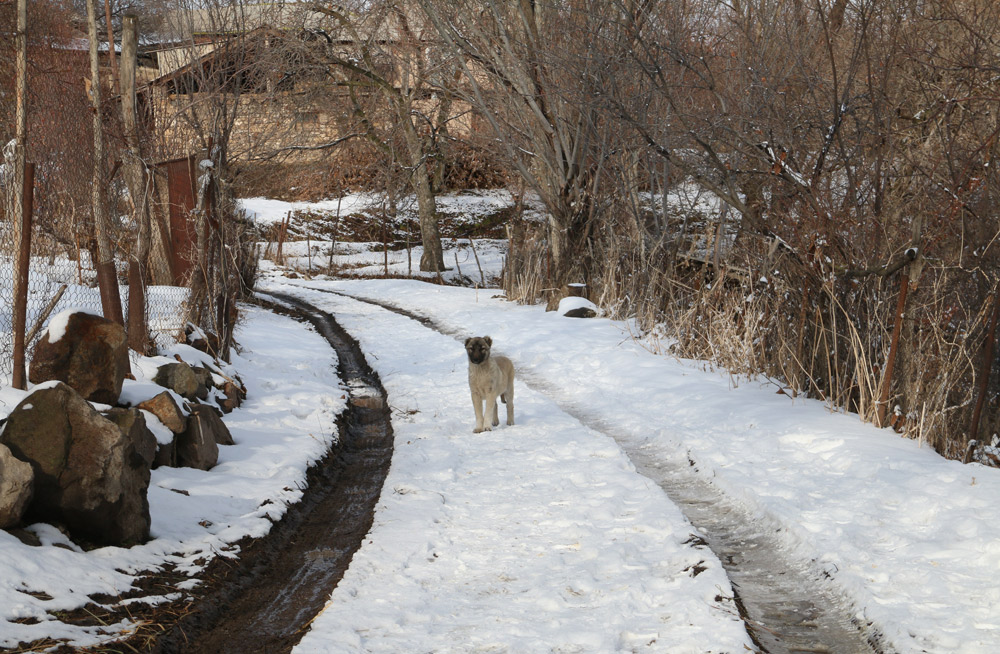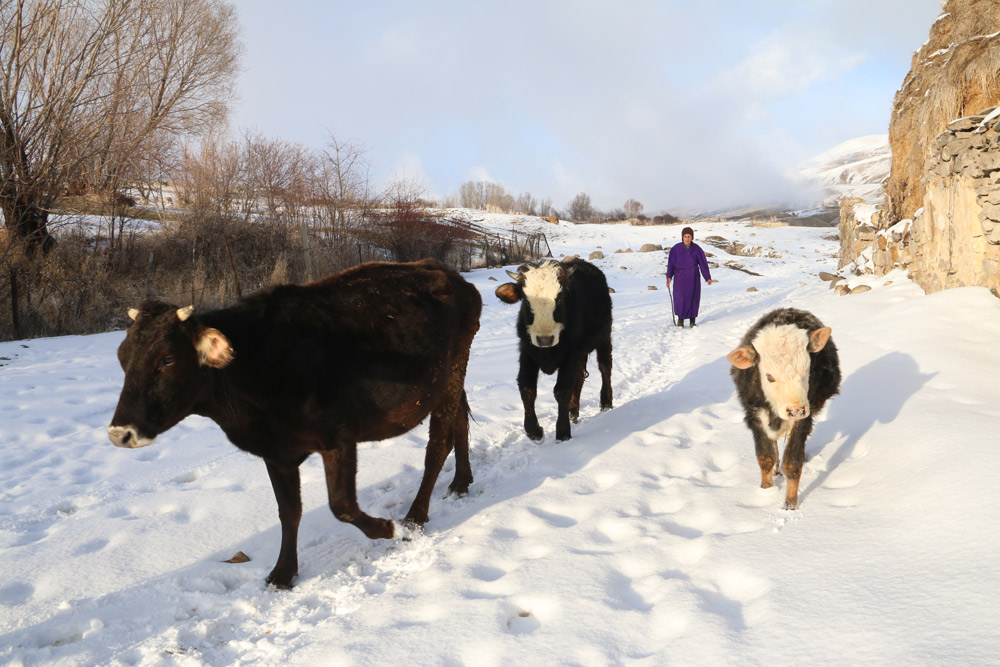
Tall Tales and Reality: Stories from Bardzruni, an Armenian Village on the Border with Azerbaijan
Marine Martirosyan
Residents of Bardzruni village in Armenia’s Vayots Dzor Province say that they are known in the neighboring villages as "chatterboxes", and it won’t take long for us to make sure of it.
"Well, residents of all villages should have nicknames. Some are said are to be killing the flies, the others - gnawing bones, and we are known as chatterboxes. But, we are very hard-working people, " says 79-year-old Armenak Melkonyan, one of the village elders.

Bella, his daughter-in-law, jokes that the Melkonyans are known as the “family of foxes” in the village. Armenak says that her villagers are “dogs”, instead.
"Well, we are known as ‘bone gnawers’,” corrects Bella.
“I tried to be more intelligent,” says Armenak, and all of us laugh.
"I come from the village of Zaritap. There’s a legend that when someone died in Zaritap during the war, he was buried somewhere. When the villagers wanted to remove his corpse to bury him elsewhere, they found a dog skeleton instead. That’s where the nickname ‘bone gnawer’ comes,” explains Bella.
 Armenak has an explanation of the roots of “fox family”.
Armenak has an explanation of the roots of “fox family”.
In 1828, three brothers - Vardan, Stepan and Melkon - together with two other people, went to Nakhijevan from the Khoy-Salmast region in Persian Armenia’s territory. A year after that, they moved to the current territory of Armenia.
One brother settled down in Zaritap, the other - in Yeghegnadzor, and Vardan, the great grandfather of Armenak Melkonyan, in Bardzruni. As soon as they reached Bardzruni, Vardan picked a handful of soil and smelled it, saying that it smelled of Salmast, so he would settle down there. One of his companions, seeing this, called Vardan “a fox”.


Armenak says there are two rivers in the village, Jraghats River (“jraghats” means “mill” in Armenian) and Shresh. The first one is named after numerous mills in Bardzruni, and the second is named after the plant shresh (Eremurus) that is widespread here.
This river is also attractive for its stones with the pictures of animals. Armenak calls it "an open-air museum."

The old village was on the opposite bank of Jraghats River. After an earthquake in 1884, the residents moved to the present-day territory.
"Our village has a rich history. The distance between the old and new villages is around 5 km. There used to live a khan here, and the village was called Sultanbek,” says Armenak.

Armenak was born and raised here. He says there were around 360 households in the village in the 1930s, but now it's different. People leave the village. The old man says that 28 years of independence should have been enough for developing and enriching the country.

"We are less than three million today. These three million people could have been very well taken care of, but grabbing and inequality lead us somewhere else," he says.

We walk together in the village, talking about community enlargement. Armenak says that enlargement implies the destruction of the village. In 2016, Bardzruni was joined with Zaritap together with 8 other villages, becoming one community. Zaritap is the center of the enlarged community.

Bardzruni is the most southern village in Vayots Dzor Province, bordering with Nakhijevan. People in the village are mostly engaged in cattle-breeding, bee-keeping and horticulture. They produced cigarettes in Soviet times.
 Administrative Representative Arsen Aleksanyan says there are 401 residents in the village, but the permanent population is 298. Ten families have left the village during the last five years. Aleksanyan says it’s mostly young men leaving to work abroad to be able to buy a house in the city.
Administrative Representative Arsen Aleksanyan says there are 401 residents in the village, but the permanent population is 298. Ten families have left the village during the last five years. Aleksanyan says it’s mostly young men leaving to work abroad to be able to buy a house in the city.
Aleksanyan has been serving in this post for one year. He also works as a physical education teacher at the neighboring Sers village school. He notes that there are many issues in Bardzruni, but they will be solved step by step.
This year, the village's drinking water network will be changed, the road leading to the village will be "patched" (some of which has already been done), and shepherd's dwellings and sheltered pastures will be constructed in the mountains.

Soon, the village will have regular transportation to Yerevan. Zaritap mayor has purchased a new minibus for this. Three times a week, a minibus leaves for the provincial center -Vayk - and the ticket costs 500 drams.


Aleksanyan says there is lack of investment in the village, although there are good opportunities for it. Since Bardzruni is on the border, investors are exempt from taxes.

Photos: Hakob Poghosyan
 Videos
Videos Photos
Photos




Comments (3)
Write a comment